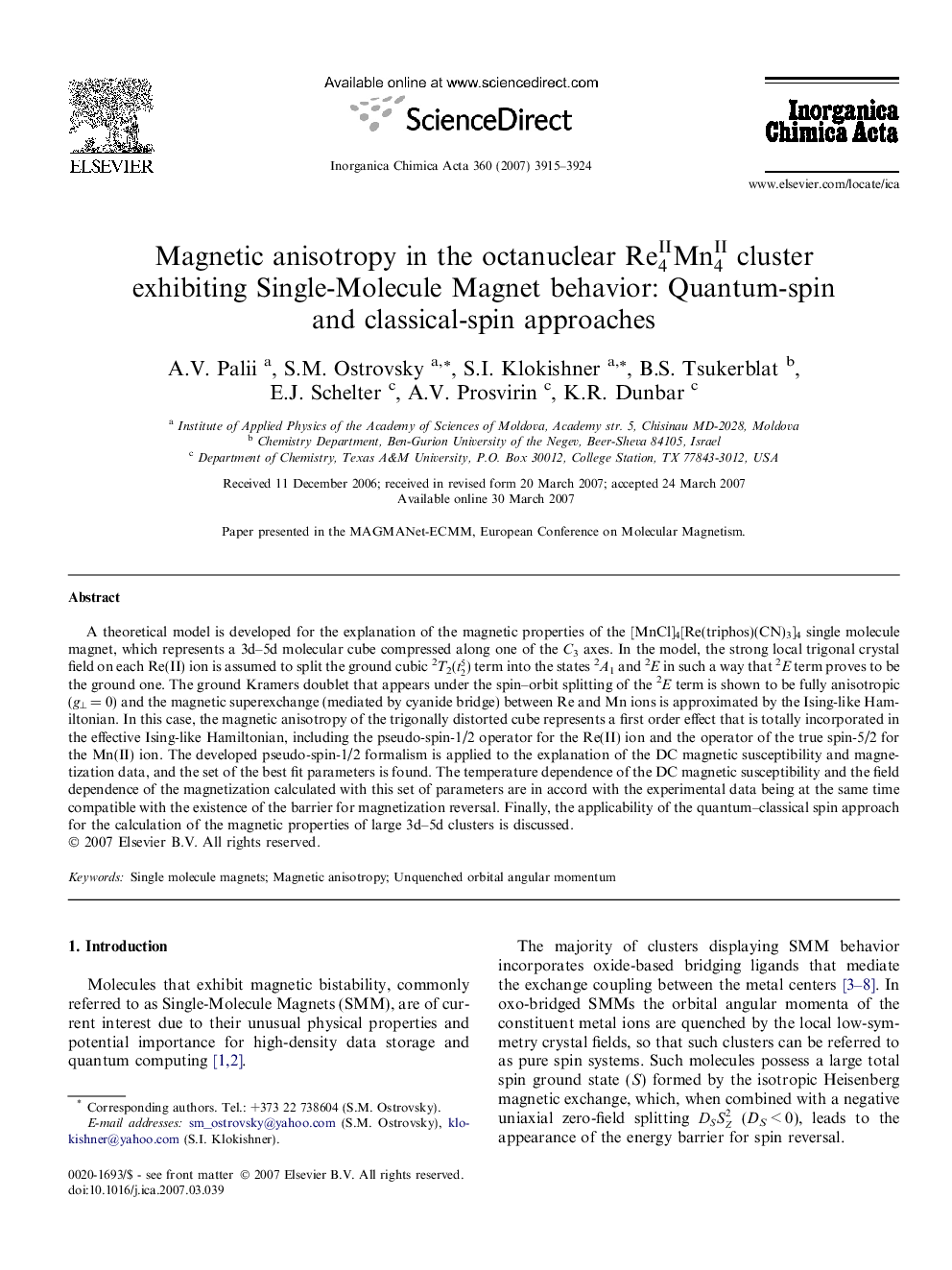| کد مقاله | کد نشریه | سال انتشار | مقاله انگلیسی | نسخه تمام متن |
|---|---|---|---|---|
| 1310363 | 975243 | 2007 | 10 صفحه PDF | دانلود رایگان |

A theoretical model is developed for the explanation of the magnetic properties of the [MnCl]4[Re(triphos)(CN)3]4 single molecule magnet, which represents a 3d–5d molecular cube compressed along one of the C3 axes. In the model, the strong local trigonal crystal field on each Re(II) ion is assumed to split the ground cubic 2T2(t25) term into the states 2A1 and 2E in such a way that 2E term proves to be the ground one. The ground Kramers doublet that appears under the spin–orbit splitting of the 2E term is shown to be fully anisotropic (g⊥ = 0) and the magnetic superexchange (mediated by cyanide bridge) between Re and Mn ions is approximated by the Ising-like Hamiltonian. In this case, the magnetic anisotropy of the trigonally distorted cube represents a first order effect that is totally incorporated in the effective Ising-like Hamiltonian, including the pseudo-spin-1/2 operator for the Re(II) ion and the operator of the true spin-5/2 for the Mn(II) ion. The developed pseudo-spin-1/2 formalism is applied to the explanation of the DC magnetic susceptibility and magnetization data, and the set of the best fit parameters is found. The temperature dependence of the DC magnetic susceptibility and the field dependence of the magnetization calculated with this set of parameters are in accord with the experimental data being at the same time compatible with the existence of the barrier for magnetization reversal. Finally, the applicability of the quantum–classical spin approach for the calculation of the magnetic properties of large 3d–5d clusters is discussed.
The theoretical model is developed for the explanation of the magnetic properties of single molecule magnet, which represents the 3d–5d molecular cube [MnCl]4[Re(triphos)(CN)3]4. It is demonstrated that the strongly anisotropic (Ising) exchange interaction between Re(II) and Mn(II) ions is responsible for the formation of the barrier for the magnetization reversal.Figure optionsDownload as PowerPoint slide
Journal: Inorganica Chimica Acta - Volume 360, Issue 13, 1 October 2007, Pages 3915–3924